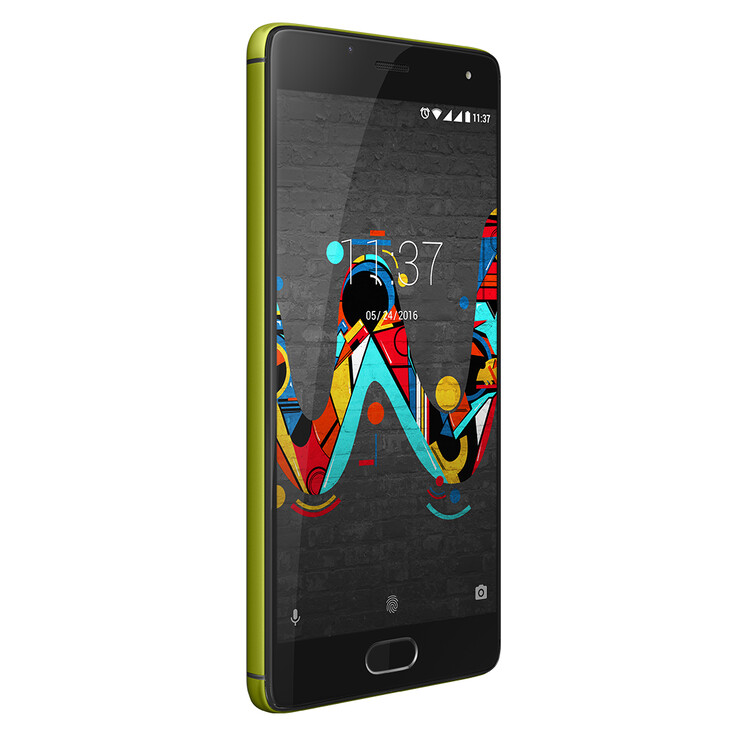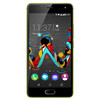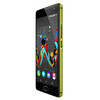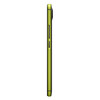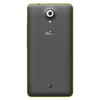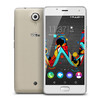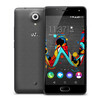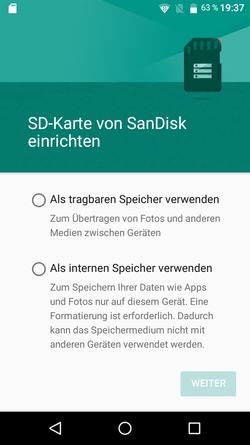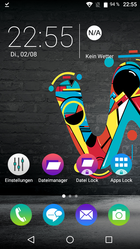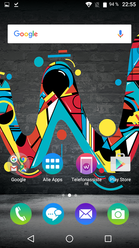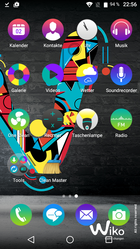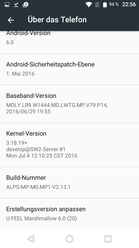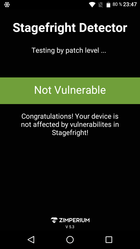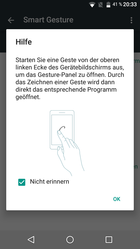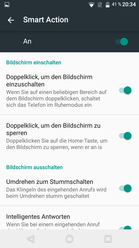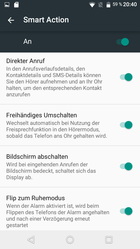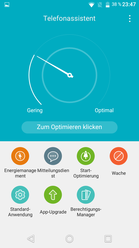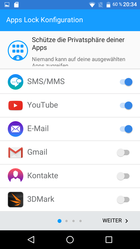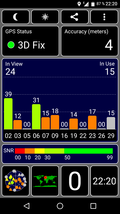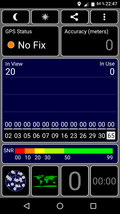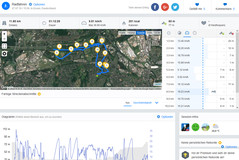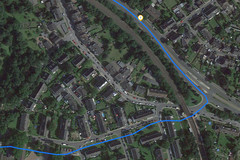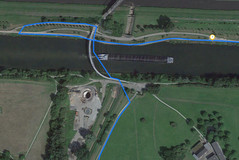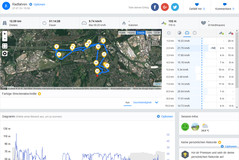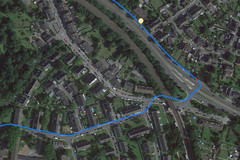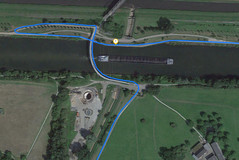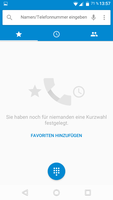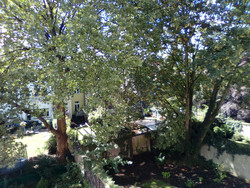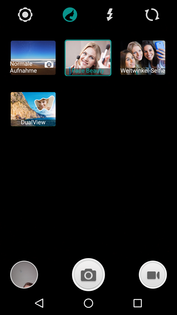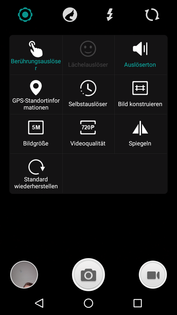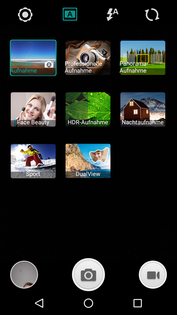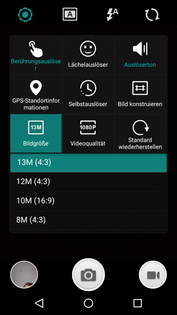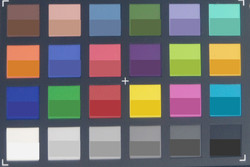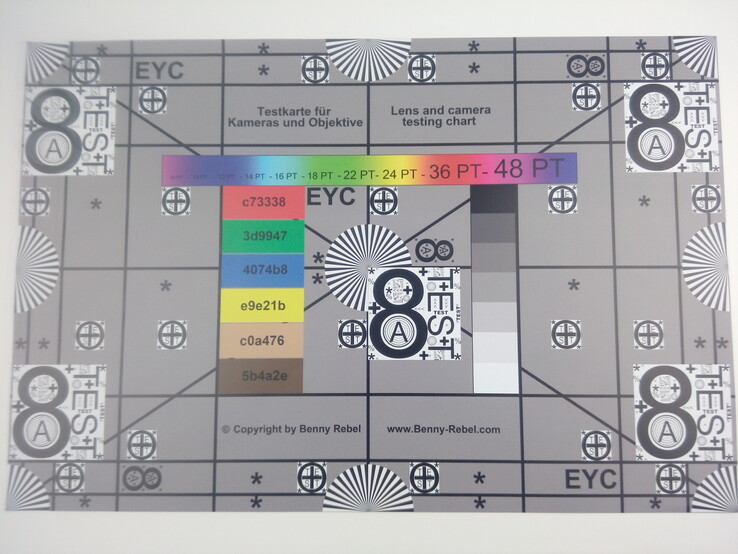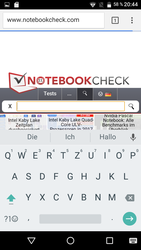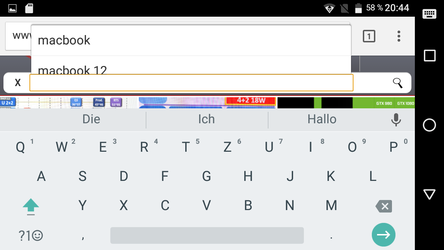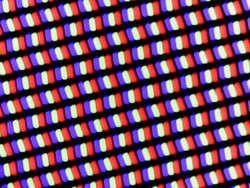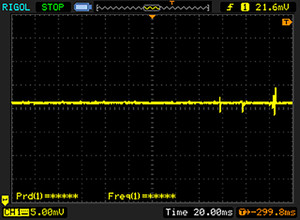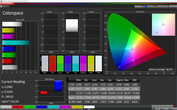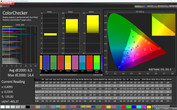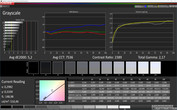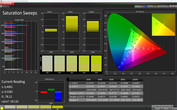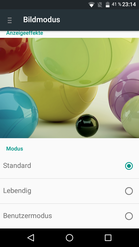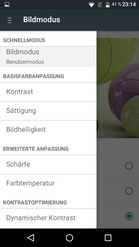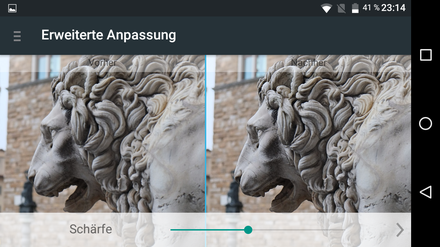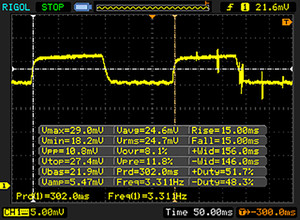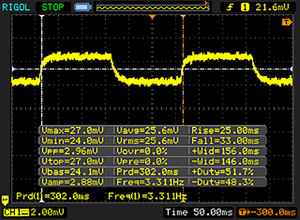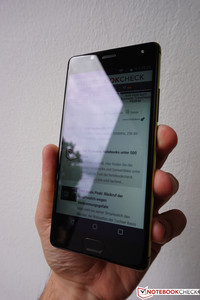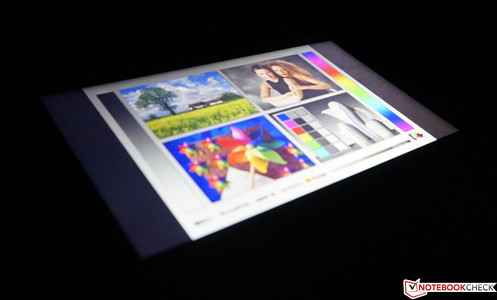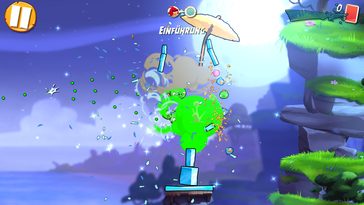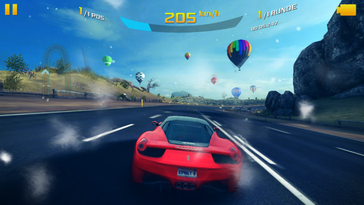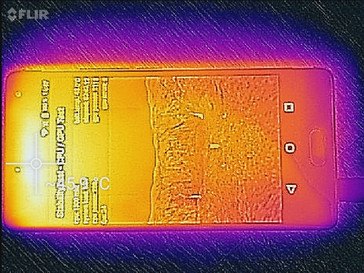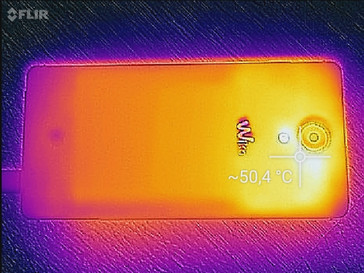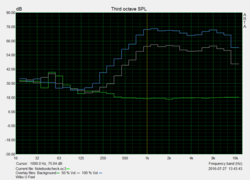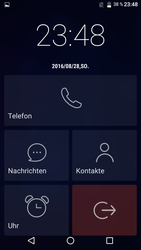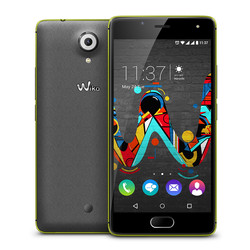Wiko U Feel Smartphone Review
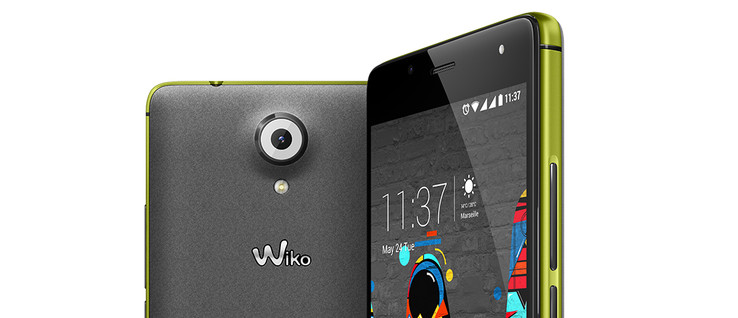
For the original German review, see here.
The Wiko U Feel belongs to the category “Useful and Trendy” from the French manufacturer and comes with solid features for a retail price of 200 Euros (~$223): 5-inch HD IPS display, quad-core SoC, 3 GB RAM, dual-SIM, 16 GB storage and extension via microSD-card. Pictures can be taken with a 13 MP camera at the back and a 5 MP sensor at the front. The operating system is Android 6.0 Marshmallow and fast LTE connections are supported as well.
Another aspect of the U Feel is the fingerprint scanner, which is not just for unlocking the device. You can assign different actions for up to five fingers, which is already familiar from some other models. It is also possible to select apps and documents, which can be accessed via fingerprint.
There is no shortage of rivals in this price range. We selected the following devices for this comparison: Honor 5C, Samsung Galaxy J5 (2016), HTC Desire 530, LG X Screen and ZTE Blade V7.
Case
The manufacturer uses a combination of plastic, metal and glass for the chassis of the U Feel. All the edges are slightly rounded, so the handling of the smartphone is very comfortable. You can get a total of three colors, which will affect the metal frame (gray or lemon) or the rear cover (gray or creamy). The rear will feel a bit strange at first. Wiko talks about a sandstone surface and it reminds us of fine sandpaper. We got used to the surface after a couple of days though, and it provides good grip and is not susceptible to dirt or fingerprints.
Build quality and stability of the mainstream device can convince us for the most part. Pressure is no problem at all and we can just hear minor creaking when we try to twist the device. The thin rear cover can be removed and grants access to the three slots (1x microSD, 2x Micro-SIM), but the battery is unfortunately integrated and cannot be replaced.
The dimensions and the weight of the test model are average within the comparison group. The 5-inch smartphone is, however, not that much smaller than the rivals with a slightly bigger 5.2-inch screen, which is also a result of the pretty big frame above and below the display. The camera lens on the back is also slightly protruding, so the smartphone can wobble a bit when it is lying on the rear.
Connectivity
Quad-core SoC, 3 GB RAM, 16 GB internal storage + microSD, dual-SIM, fingerprint scanner, and Android 6.0 Marshmallow: The Wiko U Feel comes with all the important features we expect from a mainstream device at a first look. Only the wireless capabilities are a bit limited. You can use around 10.5 GB from the 16 GB internal storage after the initial setup, but the updates for all the preloaded apps will need another gigabyte. It is possible to expand the storage by up to 64 GB via microSD-card and you can choose if you want to format the card as mobile (for pictures and media) or internal storage, which is an inexpensive method to expand the built-in storage.
The Micro-USB 2.0 port is located at the bottom and supports USB-OTG for the fast connection of USB flash drives or peripherals. MHL and NFC on the other hand are not supported, so connections to other devices are limited to Wi-Fi Direct and Bluetooth 4.0. The integrated FM radio works with an attached headset.
SD Card Reader
We use our reference card Toshiba Exceria Pro M401 64 GB (up to 95/80 MB/s read/write) to evaluate the performance of the integrated card reader. The Androbench benchmark only determined about 30 and 16 MB/s (read/write) for the test model, which means it can take longer than necessary when you save images or videos.
| SD Card Reader | |
| maximum SDCardreader Maximum Transfer Rate | |
| average SDCardreader Average Transfer Rate |
Software
Similar to its other models, Wiko also ships the U Feel with Android 6.0 Marshmallow and a modified user interface. The changes are mainly focused on the design of the home screen. All the apps are shown side by side on the home screens, but there is also an alphabetical overview. So-called Smart Actions are supported as well. They include, among others, the activation of the smartphone via double tap on the touchscreen, or muting the smartphone by turning it around.
In addition to some tools from the manufacturer to optimize the system, there are two apps with the designation "File Lock" and "Apps Lock", which can also be used in combination with the fingerprint scanner. They can be used to protect certain apps and files against unwanted access. The scanner itself (touch sensor) leaves a good impression and is very fast. You can save up to five different fingerprints, which can be assigned with different actions. It is, for example, possible to launch certain apps or call contacts.
There is currently no information about an update to Android 7 Nougat.
Communication and GPS
The two Micro-SIM slots of the Wiko U Feel support LTE Cat.4 with maximum transfer rates of 150 Mbps (downstream) and 50 Mbps (upstream), respectively. The device is shipped with a three-part adapter set for SIM cards, but only one adapter can be used for the Micro-SIM slot. The signal quality was just average in the metropolitan T-Mobile network. The faster network was often only used after we selected it manually and the smartphone was often using the Edge network, while a simultaneously used smartphone from Acer had a 4G network.
The WLAN module is also limited to the essentials, because you only get the standards 802.11 b/g/n in 2.4 GHz networks. We measured transfer rates of around 50 Mbps in our standardized WLAN test at a close distance to the router (Linksys EA8500). These results are not uncommon in this price range. Subjectively, the signal quality was once again not that good, because the download speeds were noticeably slower with an increasing distance (~3 meters, 2 walls).
| Networking | |
| iperf Server (receive) TCP 1 m | |
| Honor 5C | |
| Wiko U Feel | |
| iperf Client (transmit) TCP 1 m | |
| Honor 5C | |
| Wiko U Feel | |
The position of the smartphone can be located via GPS, but it will only work outdoors. We did not get a signal indoors. The app GPS Test determines a good accuracy of 4 meters outdoors, but we also check the performance on a bicycle ride and compare the results with the professional navigation device Garmin Edge 500. The smartphone does not locate the position as often as the Garmin and we can also see a slight deviation in some sections, so the overall track length is about 250 meters shorter. Still, there should not be any problems when you navigate in a car.
Telephone and Voice Quality
The phone app is simply designed and the handling should not be a problem for anyone. Besides access to contacts, there is also a history and favorites. The test model was inconspicuous during our test calls. There were sometimes minor background noises, but communication was not affected by this. The provided headset could record voices a bit louder. It is equipped with a cable remote to accept calls, and it does its job. You have to pay attention to the position of the speaker at the back when you use the hands-free feature, because it is quickly covered on softer materials in particular.
Cameras
Wiko equips the U Feel with a 13 MP camera at the back as well as a 5 MP camera at the front, and both modules are supported by an LED flash. You get familiar options in the camera app like the Beauty Mode, which uses a soft focus. There are also different picture modes including a professional mode, where you can adjust many parameters manually. Another nice gimmick is the dual-view mode, where the picture of the front camera is integrated into the picture. Videos can be recorded at up to 1920x1080 pixels (30 fps), but the sensor has problems with fast movements.
The front camera has a special wide-angle mode for selfies, where you have to pan the smartphone in two directions similar to a panorama. The picture is, however, much darker compared to the other modes. All in all, the quality of the front camera is certainly sufficient for its purpose.
We are a bit disappointed by the main camera though. Despite the comparatively high resolution of 13 MP, the pictures are anything but sharp and you cannot see many details. This is particularly evident in scene 2, where the green bushes look like a blurred area. There are almost no details in dark environments, either; the sign on the right side of the picture (scene 3), for example, is hard to see at all and there is blooming around the light source. This is another example of the fact that a good camera is not only defined by its resolution.
We also take pictures of the ColorChecker Passport and the test chart under controlled lighting conditions to get a better idea about the colors and the sharpness. The results are not edited afterwards. The colors of the camera are too pale and the sharpness cannot convince, despite the high resolution. The section from the center does not have really sharp edges and the situation is even worse towards the peripheral areas.
Accessories and Warranty
Besides the usual accessories like the modular 5-Watt power adapter (5V, 1A), a USB cable, a headset, and some service brochures, Wiko also ships the smartphone with a couple of SIM adapters. It should therefore not be a problem to use at least one of the Micro-SIM slots.
The warranty period is 24 months for the smartphone, but the accessories are only covered for 6 months.
Input Devices and Handling
You can use the standard Google keyboard for inputs. It supports all common features and works well. The capacitive touchscreen recognizes up to 5 inputs simultaneously and provides good gliding capabilities. The general handling is very smooth and there will only be some stutters or delays when you really stress the device.
Even though there is sufficient space underneath the display and the fingerprint scanner can also be used as a home button, Wiko waives sensor buttons and implements on-screen controls instead. The physical buttons are well integrated into the chassis and do not wobble. The pressure point is conveniently rich as well; only the clicking sound of the home button could be a bit quieter.
Display
The 5-inch LC display is based on IPS technology and has a native resolution of 1280x720 pixels. The resulting pixel density (294 PPI) enables sharp pictures and texts, but there are already devices with the Full HD resolution (like the Honor 5C or ZTE Blade V7) in this price range.
We determine a good average luminance of 485 cd/m² on a pure white picture, but the brightness distribution is just average at 83%. The luminance drops a bit to 414 cd/m² with an even distribution of bright and dark picture content (APL50). The very low black value of just 0.22 cd/m² (APL50: 0.2 cd/m²) results in a maximum contrast ratio of more than 2200:1, which easily beats all LCD-based rivals. Only an AMOLED, which is used for the Samsung Galaxy J5 (2016), for example, can keep up with these values. We did not detect PWM flickering at any brightness level.
Screen Flickering / PWM (Pulse-Width Modulation)
| Screen flickering / PWM not detected | |||
In comparison: 53 % of all tested devices do not use PWM to dim the display. If PWM was detected, an average of 8108 (minimum: 5 - maximum: 343500) Hz was measured. | |||
| |||||||||||||||||||||||||
Brightness Distribution: 83 %
Center on Battery: 500 cd/m²
Contrast: 2273:1 (Black: 0.22 cd/m²)
ΔE ColorChecker Calman: 6.3 | ∀{0.5-29.43 Ø4.78}
ΔE Greyscale Calman: 5.2 | ∀{0.09-98 Ø5}
Gamma: 2.17
CCT: 7536 K
| Wiko U Feel IPS, 1280x720, 5" | Honor 5C IPS, 1920x1080, 5.2" | Samsung Galaxy J5 2016 AMOLED, 1280x720, 5.2" | HTC Desire 530 IPS, 1280x720, 5" | LG X Screen IPS, 1280x720, 5" | ZTE Blade V7 IPS, 1920x1080, 5.2" | |
|---|---|---|---|---|---|---|
| Screen | -22% | 8% | -10% | -24% | -42% | |
| Brightness middle (cd/m²) | 500 | 515 3% | 289 -42% | 375 -25% | 392 -22% | 409 -18% |
| Brightness (cd/m²) | 485 | 498 3% | 291 -40% | 376 -22% | 376 -22% | 411 -15% |
| Brightness Distribution (%) | 83 | 93 12% | 96 16% | 91 10% | 90 8% | 96 16% |
| Black Level * (cd/m²) | 0.22 | 0.49 -123% | 0.32 -45% | 0.27 -23% | 0.38 -73% | |
| Contrast (:1) | 2273 | 1051 -54% | 1172 -48% | 1452 -36% | 1076 -53% | |
| Colorchecker dE 2000 * | 6.3 | 6.2 2% | 4.7 25% | 6 5% | 7.5 -19% | 9.4 -49% |
| Colorchecker dE 2000 max. * | 14.4 | 11.4 21% | 7.3 49% | 9.5 34% | 13.1 9% | 17.6 -22% |
| Greyscale dE 2000 * | 5.2 | 7.4 -42% | 3 42% | 4.5 13% | 9.9 -90% | 11.6 -123% |
| Gamma | 2.17 101% | 2.28 96% | 2.03 108% | 2.26 97% | 2.07 106% | 2.25 98% |
| CCT | 7536 86% | 8664 75% | 6291 103% | 6975 93% | 9704 67% | 9597 68% |
* ... smaller is better
We can measure average DeltaE-2000 deviations of 6.3 (ColorChecker) and 5.2 (grayscale) ex-works, while the target values are smaller than 3 in each case. There is also a slight blue cast, but it can be compensated for thanks to some additional settings. Besides the normal and vivid mode, the U Feel also offers a manual mode where you can adjust several aspects like the sharpness or the color temperature.
Display Response Times
| ↔ Response Time Black to White | ||
|---|---|---|
| 30 ms ... rise ↗ and fall ↘ combined | ↗ 15 ms rise | |
| ↘ 15 ms fall | ||
| The screen shows slow response rates in our tests and will be unsatisfactory for gamers. In comparison, all tested devices range from 0.1 (minimum) to 240 (maximum) ms. » 79 % of all devices are better. This means that the measured response time is worse than the average of all tested devices (20.2 ms). | ||
| ↔ Response Time 50% Grey to 80% Grey | ||
| 58 ms ... rise ↗ and fall ↘ combined | ↗ 25 ms rise | |
| ↘ 33 ms fall | ||
| The screen shows slow response rates in our tests and will be unsatisfactory for gamers. In comparison, all tested devices range from 0.165 (minimum) to 636 (maximum) ms. » 94 % of all devices are better. This means that the measured response time is worse than the average of all tested devices (31.6 ms). | ||
The maximum luminance is not further increased with the activated brightness sensor, but this is not really necessary, either. You can still see the display content comfortably even in bright environments as long as you can avoid reflections on the glossy screen surface.
IPS displays generally provide wide viewing angles, but the test model is only average in this respect. There are no color deviations, but the contrast will drop pretty quickly even with small shifts. This is still moaning on a pretty high level, and there should not be any limitations in practice.
Performance
The SoC is provided by MediaTek and has the designation MT6735. It consists of four Cortex-A53 cores clocked at up to 1.3 GHz, which is 200 MHz lower than the reference design at 1.5 GHz. The mainstream SoC is also equipped with the graphics unit ARM Mali-T720 as well as 3 GB RAM. The performance of the smartphone is therefore solid.
This is also supported by the benchmarks, where both the processor and the graphics performance are usually only beaten by the Honor 5C and the ZTE Blade V7. Other rivals, including the popular Samsung Galaxy J5 (2016), are beaten by the test model in many benchmarks. We already mentioned that the handling is smooth in general, and you will only notice some stutters or delays in more complex situations.
| AnTuTu v6 - Total Score | |
| Honor 5C | |
| ZTE Blade V7 | |
| Wiko U Feel | |
| Samsung Galaxy J5 2016 | |
| HTC Desire 530 | |
| LG X Screen | |
| Geekbench 3 | |
| 64 Bit Multi-Core Score | |
| Honor 5C | |
| ZTE Blade V7 | |
| LG X Screen | |
| Samsung Galaxy J5 2016 | |
| 64 Bit Single-Core Score | |
| Honor 5C | |
| ZTE Blade V7 | |
| Samsung Galaxy J5 2016 | |
| LG X Screen | |
| 32 Bit Multi-Core Score | |
| Wiko U Feel | |
| HTC Desire 530 | |
| 32 Bit Single-Core Score | |
| Wiko U Feel | |
| HTC Desire 530 | |
| 3DMark | |
| 1280x720 offscreen Ice Storm Unlimited Score | |
| Honor 5C | |
| ZTE Blade V7 | |
| Wiko U Feel | |
| Samsung Galaxy J5 2016 | |
| LG X Screen | |
| HTC Desire 530 | |
| 1280x720 offscreen Ice Storm Unlimited Graphics Score | |
| Honor 5C | |
| ZTE Blade V7 | |
| Wiko U Feel | |
| HTC Desire 530 | |
| Samsung Galaxy J5 2016 | |
| LG X Screen | |
| 1280x720 offscreen Ice Storm Unlimited Physics | |
| Honor 5C | |
| ZTE Blade V7 | |
| Wiko U Feel | |
| LG X Screen | |
| Samsung Galaxy J5 2016 | |
| HTC Desire 530 | |
| 2560x1440 Sling Shot OpenGL ES 3.0 | |
| Honor 5C | |
| ZTE Blade V7 | |
| Wiko U Feel | |
| Samsung Galaxy J5 2016 | |
| LG X Screen | |
| 2560x1440 Sling Shot OpenGL ES 3.0 Graphics | |
| Honor 5C | |
| ZTE Blade V7 | |
| Wiko U Feel | |
| Samsung Galaxy J5 2016 | |
| LG X Screen | |
| 2560x1440 Sling Shot OpenGL ES 3.0 Physics | |
| Honor 5C | |
| ZTE Blade V7 | |
| Wiko U Feel | |
| LG X Screen | |
| Samsung Galaxy J5 2016 | |
| GFXBench (DX / GLBenchmark) 2.7 | |
| T-Rex Onscreen | |
| Honor 5C | |
| Wiko U Feel | |
| ZTE Blade V7 | |
| Samsung Galaxy J5 2016 | |
| LG X Screen | |
| HTC Desire 530 | |
| 1920x1080 T-Rex Offscreen | |
| Honor 5C | |
| ZTE Blade V7 | |
| Wiko U Feel | |
| Samsung Galaxy J5 2016 | |
| LG X Screen | |
| HTC Desire 530 | |
| GFXBench 3.0 | |
| on screen Manhattan Onscreen OGL | |
| Honor 5C | |
| Wiko U Feel | |
| ZTE Blade V7 | |
| HTC Desire 530 | |
| LG X Screen | |
| Samsung Galaxy J5 2016 | |
| 1920x1080 1080p Manhattan Offscreen | |
| Honor 5C | |
| ZTE Blade V7 | |
| Wiko U Feel | |
| Samsung Galaxy J5 2016 | |
| LG X Screen | |
| HTC Desire 530 | |
| GFXBench 3.1 | |
| on screen Manhattan ES 3.1 Onscreen | |
| Honor 5C | |
| Wiko U Feel | |
| ZTE Blade V7 | |
| Samsung Galaxy J5 2016 | |
| 1920x1080 Manhattan ES 3.1 Offscreen | |
| Honor 5C | |
| ZTE Blade V7 | |
| Wiko U Feel | |
| Samsung Galaxy J5 2016 | |
| PCMark for Android - Work performance score | |
| Honor 5C | |
| Samsung Galaxy J5 2016 | |
| LG X Screen | |
| ZTE Blade V7 | |
| Wiko U Feel | |
| HTC Desire 530 | |
We performed the web benchmarks with the preloaded Chrome browser in version 52 since Wiko does not install its own browser. The test model is once again average and only the Honor 5C performs much better. Subjectively, web browsing is sufficiently quick, although there can be delays on longer or very complex websites.
The 16 GB internal storage leaves mixed impressions. While it is among the fastest in terms of sequential reads (234 MB/s), it clearly falls behind many rivals in terms of sequential write operations (20 MB/s). The 4K results are not that good, either, but still average within our comparison group.
| Octane V2 - Total Score | |
| Honor 5C | |
| Samsung Galaxy J5 2016 | |
| Wiko U Feel | |
| ZTE Blade V7 | |
| LG X Screen | |
| HTC Desire 530 | |
| Mozilla Kraken 1.1 - Total | |
| HTC Desire 530 | |
| ZTE Blade V7 | |
| Wiko U Feel | |
| Samsung Galaxy J5 2016 | |
| LG X Screen | |
| Honor 5C | |
| JetStream 1.1 - Total Score | |
| Honor 5C | |
| ZTE Blade V7 | |
| Wiko U Feel | |
| Samsung Galaxy J5 2016 | |
| LG X Screen | |
| HTC Desire 530 | |
| AndroBench 3-5 | |
| Sequential Read 256KB | |
| Honor 5C | |
| Wiko U Feel | |
| ZTE Blade V7 | |
| Samsung Galaxy J5 2016 | |
| LG X Screen | |
| HTC Desire 530 | |
| Sequential Write 256KB | |
| Honor 5C | |
| Samsung Galaxy J5 2016 | |
| LG X Screen | |
| HTC Desire 530 | |
| Wiko U Feel | |
| ZTE Blade V7 | |
| Random Read 4KB | |
| Honor 5C | |
| ZTE Blade V7 | |
| Wiko U Feel | |
| Samsung Galaxy J5 2016 | |
| HTC Desire 530 | |
| LG X Screen | |
| Random Write 4KB | |
| Honor 5C | |
| Samsung Galaxy J5 2016 | |
| HTC Desire 530 | |
| Wiko U Feel | |
| LG X Screen | |
| ZTE Blade V7 | |
* ... smaller is better
Games
The U Feel can benefit from its lower HD resolution in our gaming benchmarks. Since the GPU has to calculate fewer pixels, the frame rates will rise and even modern titles like the racing game Asphalt 8: Airborne can be played well at medium details. The sensors work reliably and the speaker at the back is pretty close to the lower edge, so it is not easily covered by the hand when you play in landscape mode.
Emissions
Temperature
The Wiko U Feel is a pretty warm smartphone and even reaches average surface temperatures around 35 °C under light workloads. The upper part in particular warms up under load, where we can measure up to 46 °C. This means one side of the case will be much warmer than the other when you play games in landscape mode. Considering the performance, the surface temperatures are pretty high and could become a bit uncomfortable for longer periods.
(-) The maximum temperature on the upper side is 45.4 °C / 114 F, compared to the average of 35.2 °C / 95 F, ranging from 21.9 to 247 °C for the class Smartphone.
(-) The bottom heats up to a maximum of 47.4 °C / 117 F, compared to the average of 34 °C / 93 F
(±) In idle usage, the average temperature for the upper side is 34.9 °C / 95 F, compared to the device average of 32.9 °C / 91 F.
Speakers
Wiko located the mono speaker at the rear and it can be pretty loud at around 85 dB(A). There is a bit too much emphasis on the high tones and there is – as expected – not much in terms of bass reproduction, but the result is still pretty balanced in general.
Within the Music app, you can find additional settings (equalizer, hall) as well as the two options Bass Boost and Surround Sound, but they can only be used in combination with headphones. The overall sound does not really change though.
The sound is sufficient for occasional YouTube videos, games or some background music, but we would recommend good headphones or external speakers for better quality. They can either be attached via 3.5 mm stereo jack or Bluetooth. The test model was inconspicuous in this regard (low noise, no connection issues).
Wiko U Feel audio analysis
(+) | speakers can play relatively loud (85.4 dB)
Bass 100 - 315 Hz
(-) | nearly no bass - on average 39.4% lower than median
(±) | linearity of bass is average (7.1% delta to prev. frequency)
Mids 400 - 2000 Hz
(±) | reduced mids - on average 7.2% lower than median
(±) | linearity of mids is average (8% delta to prev. frequency)
Highs 2 - 16 kHz
(+) | balanced highs - only 2.2% away from median
(+) | highs are linear (3% delta to prev. frequency)
Overall 100 - 16.000 Hz
(±) | linearity of overall sound is average (25.9% difference to median)
Compared to same class
» 65% of all tested devices in this class were better, 6% similar, 29% worse
» The best had a delta of 11%, average was 35%, worst was 134%
Compared to all devices tested
» 79% of all tested devices were better, 4% similar, 17% worse
» The best had a delta of 4%, average was 24%, worst was 134%
Honor 5C audio analysis
(+) | speakers can play relatively loud (87.9 dB)
Bass 100 - 315 Hz
(-) | nearly no bass - on average 30.9% lower than median
(±) | linearity of bass is average (8.1% delta to prev. frequency)
Mids 400 - 2000 Hz
(±) | higher mids - on average 7.1% higher than median
(±) | linearity of mids is average (8.8% delta to prev. frequency)
Highs 2 - 16 kHz
(±) | higher highs - on average 12.1% higher than median
(+) | highs are linear (2.9% delta to prev. frequency)
Overall 100 - 16.000 Hz
(-) | overall sound is not linear (31.7% difference to median)
Compared to same class
» 81% of all tested devices in this class were better, 2% similar, 16% worse
» The best had a delta of 11%, average was 35%, worst was 134%
Compared to all devices tested
» 90% of all tested devices were better, 2% similar, 8% worse
» The best had a delta of 4%, average was 24%, worst was 134%
Frequency Comparison (Checkboxes select/deselectable!)
Graph 1: Pink Noise 100% Vol.; Graph 2: Audio off
Energy Management
Power Consumption
Our idle measurements are inconspicuous within the comparison group at 0.82-1.8 Watts. However, the test model is not very efficient under load, where it consumes much more power than the rivals at 5.99-6.7 Watts. A small problem is also the 5-Watt power adapter, which can hardly cover the consumption under high loads.
| Off / Standby | |
| Idle | |
| Load |
|
Key:
min: | |
| Wiko U Feel 2500 mAh | Honor 5C 3000 mAh | Samsung Galaxy J5 2016 3100 mAh | HTC Desire 530 2200 mAh | ZTE Blade V7 2540 mAh | |
|---|---|---|---|---|---|
| Power Consumption | 2% | 33% | -35% | 28% | |
| Idle Minimum * (Watt) | 0.82 | 0.89 -9% | 0.61 26% | 1.58 -93% | 0.73 11% |
| Idle Average * (Watt) | 1.61 | 2.07 -29% | 1.41 12% | 2.59 -61% | 0.92 43% |
| Idle Maximum * (Watt) | 1.8 | 2.15 -19% | 1.51 16% | 2.66 -48% | 0.93 48% |
| Load Average * (Watt) | 5.99 | 3.46 42% | 2.56 57% | 5.22 13% | 4.47 25% |
| Load Maximum * (Watt) | 6.7 | 5.18 23% | 3.1 54% | 5.67 15% | 5.96 11% |
* ... smaller is better
Battery Runtime
The battery has a capacity of 9.25 Wh (2500 mAh) and is unfortunately integrated, despite the removable back cover. Our realistic WLAN test at an adjusted luminance of 150 cd/m² determines a very good runtime of 9 hours and 12 minutes, which is also competitive within the comparison group. We did not have any problems managing a full business day with one charge during our review period.
If you still need more stamina, you can use the two familiar power-saving modes. The normal mode is indicated by orange bars and reduces the performance as well as the number of background services, while the functionality is limited to calls, messages and a clock in the Super Power Saver mode (only accessible via Phone Assistant). Contrary to some other rivals, the Super Power Saver mode is activated and deactivated very quickly. A full battery charge takes about 2:15 hours when the device is turned on.
| Wiko U Feel 2500 mAh | Honor 5C 3000 mAh | Samsung Galaxy J5 2016 3100 mAh | HTC Desire 530 2200 mAh | LG X Screen 2300 mAh | ZTE Blade V7 2540 mAh | |
|---|---|---|---|---|---|---|
| Battery runtime | ||||||
| WiFi v1.3 (h) | 9.2 | 9.7 5% | 10.7 16% | 7.1 -23% | 9.2 0% | 8.7 -5% |
Pros
Cons
Verdict
The Wiko U Feel generally left a good impression in our review. We cannot find any significant flaws for the core features like the case, the performance, and the features of the mainstream device. It is therefore a good alternative in the very competitive price segment of around 200 Euros (~$223).
It was particularly enjoyable to use the smartphone in practice. The handling of Android 6.0 is usually smooth, there are no unnecessary customizations by the manufacturer and the fingerprint scanner was well integrated into the system. It can, for instance, be used to lock certain apps or files, although this is also possible via conventional methods (PIN, pattern).
The U Feel from the French manufacturer Wiko is a real alternative in the segment around 200 Euros (~$223), at least if you do not need a good camera. The quality of the pictures is hardly convincing, despite the high resolution.
Drawbacks of the U Feel definitely include the limited wireless capabilities (no ac or 5 GHz WLAN, no NFC) and the bad camera in particular. Despite the high resolution (13 MP), the picture quality cannot convince us. Honor's 5C offers a slightly better overall package with more performance and a better camera, but it has some problems of its own. If you can live with the mentioned drawbacks, there is no reason against the purchase of the Wiko U Feel.
Wiko U Feel
- 09/03/2016 v5.1 (old)
Andreas Osthoff




